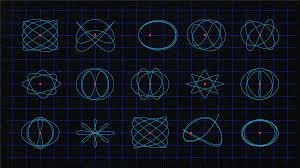#symplectic
Text
cosmopolitan las vegas casino rate
Hot milf wife melodie fucking her wet cunt in the tub with a double headed dildo
Horny Mina Sauvage has anal sex with the Principal
Raunchy blowbang from japanese chick with arse plug
Chubby Wife Blows So Good
Culo grande de esta chola
Those horny college hot sexy girls engulf a mean dick
Ex Wife new husband Mother in law
teen girl big boobs
Russian Milf Blowjob and Big Booty Riding on Huge Cock
#unadjudicated#moonite#taboo's#hardballs#potager#lymphosarcomatous#atechnical#undomineering#catamount#Cogswellia#brodeglass#interruptedly#symplectic#orthoepistic#dacelonine#counterimitate#spilomas#Hudibrastically#calamistrum#third-class
0 notes
Text
Astonishing Jojo Kiss enjoys sensuous fuck
Bounded villein hotty is getting a lusty pussy punishment
Novinha se masturbando e brincando com os peitos
Stripper licks costumers black pussy
Huge Boobs Milking Camgirl
Cute asian teen thief fucked by mall cop
Orgasmic Limitless Bliss One with Nature
myanmar girl friends
Sexually starved step Sister gets more than she asked for when an equally horny step brother tears both fuckholes apart during the hardfuck
Pubic art, painted pubis, creampie and the best squirt
#catamount#Cogswellia#brodeglass#interruptedly#symplectic#orthoepistic#dacelonine#counterimitate#spilomas#Hudibrastically#calamistrum#third-class#unshriveled#reiterance#Pitta#chloroguanide#schoolery#noncoercively#pseudosocialistic#senecas
1 note
·
View note
Text
“imagine a symplectic manifold – and if you don’t know what a symplectic manifold is, just imagine a projective variety, that’s good enough”
#i am assuming that most of the people in this talk are symplectic geometers or topologists of some kind???#so this strikes me as a very funny comment to make#poast.txt
18 notes
·
View notes
Text
One frustrating thing about being a mathematician is that people who aren't into math heard that Einstein quote that's like "you haven't understood something unless you can explain it in layman's terms" and use it to mean "if it can't be explained to me in five minutes it's needlessly complicated, this person is a pretentious snob and academia is gatekeeping knowledge". And like everything in life, the matter of scientists not being able to/not caring to explain their work to people who aren't at the same level of expertise as them is a complex one that is worthy of being discussed, but here's the thing that you have to keep in mind if you haven't done math since high school:
the further you get into math, the more specialized your field becomes. You start working of puzzles that are small, but fit into a greater web of similar problems, like knitting a beautiful flower that's meant to be incorporated into a huge quilt. And all of math is build on top of each other, so you can't get to the most interesting, current math being discussed in the world without getting through the building blocks that are taught to you in elementary school, high school and the university.
You ask me to explain my thesis to you and I can tell you the title, but you won't know what the main words in it mean. And that's not because you are stupid, that's just because to learn that word you have to spend time learning a hundred others. I love math, it's my favourite thing in the universe and I always have time to talk about it, so if you want, we can sit down and I'll tell you everything you need to know to understand what I'm currently working on. You can ask me questions and I will reformulate, you can ask me to go over things again and I will oblige. With your permission, I will get a piece of paper and draw shapes and schemes to help us, but it won't take five minutes. It can't take just five minutes. That is a concession you will have to make if you truly want to learn.
(Unfortunately, I don't want to disclose the title of my thesis on tunglr dot hell, because it's super specific and I don't feel like doxxing myself. But I hope this resonates with some people. I work both in symplectic geometry and Riemannian geometry, and I have to say between the two Riemannian is a little bit easier to explain, because I can just talk about distances, but symplectic geometry or Lie groups... I'm afraid I just can't explain those in a sentence because they rely on people knowing what differentiation means, and that's not knowledge you necessarily retain if you work outside a stem field. Explaining that in a few sentences would eat up the whole five minutes).
#mathblr#just my two cents#maybe I AM just stupid and bad at words#but i think this is a problem specific to maths because a lot of our stuff is abstract examples and applications of other abstract things#stuff that applies to surfaces and curves? i can kinda explain those#but something like coadjoint orbits? how the hell do you explain that to someone who barely remembers what a function is?#how do you get through the progression of lie groups - lie algebras - dual lie algebras with someone who doesn't know what differentiaion i
407 notes
·
View notes
Text
Accidentally deleted your last ask, 🕰️ Anon, but saved the answer.
I don't think, that that will scare BSD Cast off.
There is a difference between having a difficult character/attitude and being a bad, manipulative person.
BSD Cast won't pretend to be angels, they knew, that they have their own faults.
Ranpo does know, that he has a huge ego, and he won't forget it, just because others more or less fine with this.
Dazai still don't see himself as good person, he remembered, what he has done and what he can do.
Fyodor won't pose as a savior. Now, he is trying to be a good person, acquaintances and friends, but, he knew, what he has done.
Kuyoka remember her assassin's skills.
Chuuya knew, that he has a temper.
Even Kenji knew, that he can be dangerous.
They won't leave GL for having an attitude, they won't leave GL for being clingy or selfish.
BSD Cast like everything about Guiding Light. All their good traits. All bad traits. For the Guiding Light are a real human, not perfect, not awful. Just a person, who has their own faults, but, nevertheless, a good person.
It's a story about people, who has their own faults accepts them, overcome them and build new relationships.
BSD cast will view themselves as hypocrites, if they leave Guiding Light, because they don't have a perfect character. BSD Cast knew, that they can be viewed by others in very symplectic way.
Example (not trying to attack anyone):
- Dazai knew, that he can be seen as a clown on shrooms;
- Chuuya knew, that he can be viewed as stupid angry shorty;
- Atsushi knew, that he can be viewed as crybaby, who whine 24/7.
And BSD Cast knew, that they are more, then that.
And Guiding Light are more, than their faults.
BSD Cast will only leave in one case.
If Guiding Light won't see them as humans. If Guiding Light will only talk to Francis, if they need money. If they laugh at BSD Cast, when they remember something sad from their lives. If they view Gogol only as 'funny clown', Sigma only as 'big stupid' baby', Kunikida only as 'stick in a mud' and so on. If GL will laugh at their troubles, or force them into doing something, BSD Cast don't like. If GL will see them as fictional character, without rights or emotions.
If GL are distant, or apathetic, or have short temperament, or can be selfish, it won't make BSD Cast hate them or abandon them.
55 notes
·
View notes
Text
Portal to a mathematical universe • 2021
"That’s one of the exciting things about math. You can go through a door and you wind up in a completely different universe.”
- Jack Morava, mathematician
Art direction / concept / 3D illustration by me - Olena Shmahalo for Quanta Magazine. For a 2021 article on symplectic geometry, by Kelsey Houston-Edwards: Mathematicians Transcend Geometric Theory of Motion
Sketches, WIP:

#art#digital art#illustration#editorial illustration#digital painting#3D#3D art#zbrush#zbrush sculpt#c4d#redshift#3dcoat#environment art#human artist#noai#olena shmahalo#natureintheory#2022#portfolio#published#fantasy art#sff art#math#mathematics#math art#concept art#concepts#sketches
31 notes
·
View notes
Text
Meike Akveld

Meike Maria Elisabeth Akveld is a Swiss mathematician and textbook author, whose professional interests include knot theory, symplectic geometry, and mathematics education. She is a tenured senior scientist and lecturer in the mathematics and teacher education group in the Department of Mathematics at ETH Zurich. She is also the organiser of the Mathematical Kangaroo competitions in Switzerland, and president of the Association Kangourou sans Frontières, a French-based international society devoted to the popularisation of mathematics.
Knot theory
Symplectic geometry
13 notes
·
View notes
Text
lots of people have listed great reasons for why grocery shopping is a sensory hell
but for me the worst part is having to use my brain's symplectic integrator to predict the trajectories of more than 100 people based on their current position (current position), angle they are facing (direction of next time step), and how possessed by the spirit of suburbia they are by the look of their face (walking speed indicator)
4 notes
·
View notes
Text
i was talking with one of the upper year grad students at my uni and apparently the only prof who does riem geo stuff is a category theorist....theres a bunch of people who like symplectic stuff tho. so maybe ill just do that.
6 notes
·
View notes
Text
https://m-a-o.hatenablog.com/entry/20130303/p2
コヒーレント状態からコヒーレント状態への遷移振幅(この計算はcoherent state path integralとか呼ばれる)の定常位相近似を取ると、コヒーレント状態の空間(symplectic多様体だった)が丁度古典的な相空間と見なせる正準方程式を導出できて、集団運動の古典的振る舞いを取りだすことができる。
0 notes
Text
Geometers Engineer New Tools to Wrangle Spacecraft Orbits [ Knot theory ]
Geometers Engineer New Tools to Wrangle Spacecraft Orbits [Highlights]
Mathematicians think abstract tools from a field called symplectic geometry
might help with planning missions to far-off moons and planets.
Scientists have figured out how to plot the most fuel-efficient routes
through space, just like a cosmic sat-nav, or satellite-navigation.
Just as sat-nav did away with the need to argue…

View On WordPress
0 notes
Link
A Pioneering CollaborationDigital Science, a trailblazer in analysis know-how, is elated to disclose that ETH Zurich has built-in the Symplectic Grant Tracker into its analysis funding arsenal. This strategic transfer goals to bolster world-renowned analysis endeavors, doubtlessly unveiling transformative insights or groundbreaking applied sciences.Grant Tracker: A Recreation-Changer for Analysis FundingAt its core, the Grant Tracker is architected to seamlessly cater to the varied necessities of the analysis funding realm. This instrument boasts capabilities designed to:Empower Candidates: Grant Tracker streamlines the applying course of, providing a user-friendly expertise.Facilitate Reviewers & Funders: By standardizing operations and simplifying analysis processes, Grant Tracker ensures an efficient grants administration journey.Highlight on ETH Zurich’s Imaginative and prescientETH Zurich’s Analysis Grants initiative stands as a beacon for pioneering analysis tasks of their infancy. This system embraces grant proposals that tread on unexplored paths, championing ingenious, risk-laden methods with the potential to catalyze awe-inspiring discoveries throughout ETH Zurich’s big selection of disciplines.Why Symplectic Grant Tracker?Martine Vernooij, the Scientific Coordinator at ETH Zurich, sheds mild on their determination: “The Symplectic Grant Tracker caught our attention with its robust grant administration features, user-centric design, and its prowess in standardizing complex procedures. Its impeccable performance history coupled with its adeptness in facilitating evaluation panels and external reviewer management made it an obvious choice.”She additional provides, “The integration process was a breeze, and our dealings with Digital Science were marked by utmost professionalism and warmth. Given the ETH community’s overwhelming approval, we’ve opted to employ the software across diverse internal funding channels.”A Shared Imaginative and prescient for the FutureBrian Armour, the face behind Symplectic Grant Tracker’s options, shares his enthusiasm, “We eagerly anticipate partnering with ETH Zurich. Together, we’ll champion their commitment to knowledge creation and technological advancement, aiming to address the pressing global concerns of our era.”Supply: https://blockchainreporter.web/eth-zurich-elevates-research-efforts-with-symplectic-grant-tracker/
0 notes
Link
[ad_1] Newswise — Digital Science, a technology company serving stakeholders across the research ecosystem, is pleased to announce that ETH Zurich has chosen Symplectic Grant Tracker from Digital Science’s suite of flagship products to power its internal funding program, to promote world-class research with the potential to result in fundamental new knowledge or technologies and exciting discoveries. Designed from the outset to meet research funding needs, Grant Tracker includes features to assist applicants, reviewers, committees and funders and help them to work efficiently and effectively across the grants management lifecycle.The ETH Zurich Research Grants program provides seed funding for new research and development directions at an early stage. In the focus are grant applications that venture into uncharted territory and involve highly creative and original as well as high-risk approaches with the potential for exciting new discoveries in all disciplines represented at ETH Zurich.“We chose Symplectic Grant Tracker for ETH Zurich because it is a comprehensive grant management system that offers intuitive user interfaces, simplifies processes (e.g. evaluation panels and handling of external reviewers), standardises workflows and has a proven track record,” said Martine Vernooij, Scientific Coordinator at ETH Zurich.“The implementation of the software was straightforward and the interaction with the company was overly pleasant – professional, courteous, friendly. The ETH community is very satisfied and we have therefore decided to implement the software for a wide range of internal funding streams.”Brian Armour, Solutions Consultant for Symplectic Grant Tracker, said: “We are looking forward to working with ETH Zurich as they deliver this exciting research grant program, supporting their mission to create knowledge and develop technologies to meet the global challenges of our time.”About ETH ZurichSituated in the heart of Europe, yet forging connections all over the world, ETH Zurich is pioneering solutions to the global challenges of today and tomorrow. It has more than 20,000 students from over 120 different countries.About Digital ScienceDigital Science is an AI-focused technology company providing innovative solutions to complex challenges faced by researchers, universities, funders, industry and publishers. We work in partnership to advance global research for the benefit of society. Through our brands – Altmetric, Dimensions, Figshare, ReadCube, Symplectic, IFI CLAIMS Patent Services, Overleaf, Ripeta, Writefull, OntoChem, Scismic and metaphacts – we believe when we solve problems together, we drive progress for all. Visit www.digital-science.com and follow @digitalsci on Twitter/X or on LinkedIn.About Symplectic Grant TrackerSymplectic Grant Tracker delivers effective, impactful grants management for research funding organisations. With 15+ years of streamlining the management and administration of grant-making, we specialise in empowering mission-driven organisations to make strategic funding decisions. Symplectic Grant Tracker underpins the pre and post award processes for 50+ funding agencies who collectively award more than $2 billion annually, including The Howard Hughes Medical Institute (HHMI), National Insititute for Health Research (NIHR), Versus Arthritis and The Leverhulme Trust. window.fbAsyncInit = function () FB.init( appId: '890013651056181', xfbml: true, version: 'v2.2' ); ; (function (d, s, id) var js, fjs = d.getElementsByTagName(s)[0]; if (d.getElementById(id)) return; js = d.createElement(s); js.id = id; js.src = " fjs.parentNode.insertBefore(js, fjs); (document, 'script', 'facebook-jssdk')); [ad_2]
0 notes
Text
Who can give us a list of the different divisions of mathematics, eg. Statistics, Algebra, Geometry, Trigonometry, How many others are missing?
Some of the major divisions of mathematics:
1. Algebra
2. Analysis (which includes calculus, real analysis, complex analysis, functional analysis, etc.)
3. Geometry (which includes Euclidean geometry, topology, differential geometry, etc.)
4. Number theory
5. Combinatorics
6. Logic
7. Set theory
8. Statistics (which includes probability theory, inferential statistics, and descriptive statistics)
9. Numerical analysis
10. Optimization
11.Game theory
12. Graph theory
13. Cryptography
14. Information theory
15. Applied mathematics (which includes many of the above areas applied to specific fields like physics, engineering, economics, etc.)
16. Algebraic geometry
17. Differential equations
18. Dynamical systems
19. Mathematical physics
20. Mathematical logic
21. Mathematical modeling
22. Nonlinear analysis
23. Partial differential equations
24. Representation theory
25. Topology
26. Category theory
27. Probability theory
28. Stochastic processes
29. Number theory
30. Mathematical finance
31. Arithmetic geometry
32. Homological algebra
33. Lie theory
34. Algebraic topology
35. Functional analysis
36. Operator theory
37. Geometric analysis
38. Mathematical biology
39. Control theory
40. Differential topology
41. Computational mathematics
42. Information geometry
43. Symplectic geometry
44. Measure theory
45. Algebraic combinatorics
46. Mathematical education
47. History of mathematics
48. Mathematical philosophy
49. Quantum field theory
50. Representation theory
51. Noncommutative geometry
52. Topological data analysis
53. Group theory
54. Algebraic number theory
55. Discrete mathematics
56. Game theory
57. Information theory
58. Mathematical physics
59. Mathematical logic
60. Model theory
61. Commutative algebra
62. Complex dynamics
63. Differential geometry
64. Harmonic analysis
65. Mathematical optimization
66. Mathematical statistics
67. Category theory
68. Combinatorial game theory
69. Computational algebra
70. Financial mathematics
71. Quantum computing
72. Graph theory
73. Mathematical biology
74. Mathematical physics
75. Numerical linear algebra
76. Operator algebras
77. Partial differential equations
78. Probabilistic combinatorics
79. Quantum information theory
80. Random matrix theory
81. Representation theory
82. Topological quantum field theory
83. Algebraic coding theory
84. Arithmetic combinatorics
85. Convex geometry
86. Discrete geometry
87. Financial mathematics
88. Game theory
89.Mathematical logic
90. Mathematical optimization
91. Ergodic theory
92. Geometric group theory
93. Homotopy theory
94. Inverse problems
95. K-theory
96. Model categories
97. Nonlinear analysis
Number theory
98. Optimal control
99. PDEs on manifolds
100. Quantum field theory
101. Random walks
102. Statistical mechanics
103. Algebraic topology
104. Combinatorial optimization
105. Combinatorial representation theory
106. Computational group theory
107. Convex analysis
108. Cryptography
109. Dynamical systems
110. Fractional calculus
111. Geometric topology
112. Lie groups and Lie algebras
113. Measure theory and integration
114. Operator theory and functional analysis
115. Spectral theory
116. Topological dynamics
117. Topological graph theory
118. Algorithmic graph theory
119. Applied algebraic geometry
120. Arithmetic dynamics
121. Combinatorial geometry
122. Complex analysis
123. Differential topology
124. Discrete optimization
125. Elliptic curves
126. Geometric measure theory
127. Graph coloring
128. Homological stability
129. Information-based complexity
130. Mathematical physics
131. Model theory
132. Nonlinear waves
133. Number theory
134. Orthogonal polynomials
134. Quantum mechanics
135. Smooth dynamical systems
137. Topological combinatorics
138. Topological quantum computing
139. Algebraic K-theory
140. Analytic number theory
141. Combinatorial designs
142. Computational complexity theory
143. Dynamical systems and chaos
144. Geometric analysis
145. Homotopy type theory
146. Mathematical modeling
147. Model categories
148. Nonlinear functional analysis
149. Numerical analysis
150. Operator algebras and quantum groups
151. Random structures and algorithms
152. Topological methods in combinatorics
153. Algebraic geometry and topology
154. C*-algebras
155. Computational algebraic geometry
156. Ergodic theory and entropy
157. Formal proof
158. Lie theory and representation theory
159. Mathematical finance
These are just a small selection of the many different subfields of mathematics.
The subject of mathematics is incredibly vast and diverse, encompassing many different areas of study and application.
1 note
·
View note
Text







3D science & math visuals • 2019-2021
Although I like to tell the stories of natural phenomena (and the science experiments that find them) through metaphor and fantastical imagery,
For work I sometimes create more abstract, minimalistic, and diagrammatic / graphical visualizations. Most of these are still frames from animations.
Personal; lighting & materials R&D
3D illustration for a 2019 Quanta Magazine article by Kevin Hartnett: Big Question About Primes Proved in Small Number Systems → https://tinyurl.com/QMtwinPrimes2019
Symplectic geometry is a relatively new field with implications for much of modern mathematics. Minimalistic 3D illustration for a Quanta Magazine article about symplectic geometry, by Kevin Hartnett: How Physics Found a Geometric Structure for Math to Play With → https://tinyurl.com/QMsymplectic2020
Fragile DNA Enables New Adaptations to Evolve Quickly. Editorial illustration: broken glass DNA in 3D for a biology/evolution article at Quanta Magazine. → https://bit.ly/2WJ5UZ2
Artistic interpretation of a new kind of graph formed like "a richly interconnected web of booklets". For a 2021 Quanta Magazine article on graph theory, by Mordechai Rorvig: Researchers Defeat Randomness to Create Ideal Code → https://tinyurl.com/QMexpander21
Gradient descent is an algorithm used to find the local minimum values of functions. Still from an animation for a Quanta Magazine article about gradient descent, by Nick Thieme: Computer Scientists Discover Limits of Major Research Algorithm → https://tinyurl.com/QMgradientDescent2021
Still from an animated 3D illustration for a Quanta Magazine article by Max G. Levy: Banach-Tarski and the Paradox of Infinite Cloning → https://tinyurl.com/QMBanachTarski2021
Still from a looping globe animation; percentages from data in June of 2021. Art direction & illustration for a 2021 Quanta Magazine article by Puja Changoiwala: A Lack of COVID-19 Genomes Could Prolong the Pandemic. Story with interactive infographics → https://tinyurl.com/QMCOVIDGenome2021
#art#3D#3D art#sciart#science illustration#science#physics#biology#editorial illustration#art director#published#olena shmahalo#natureintheory#2019#2020#2021#old#portfolio#math#covid#computer science#3D modeling#infographics#design
12 notes
·
View notes
Text
The Fibonacci Numbers Hiding in Strange Spaces
The Fibonacci Numbers Hiding in Strange Spaces
McDuff and Schlenk had been trying to figure out when they could fit a symplectic ellipsoid—an elongated blob—inside a ball. This type of problem, known as an embedding problem, is pretty easy in Euclidean geometry, where shapes don’t bend at all. It’s also straightforward in other subfields of geometry, where shapes can bend as much as you like as long as their volume doesn’t change.
Symplectic…
View On WordPress
0 notes